chp 2 capacitance
1/34
Earn XP
Description and Tags
electrostatic potential and capacitance
Name | Mastery | Learn | Test | Matching | Spaced |
|---|
No study sessions yet.
35 Terms
potential differece
work done to move a unit positive charge from one point to another in an electric field. It is measured in volts (V). scalar
electrostatic potential
work done to move a unit positive charge from INFINITY to a point against electrostatic forces. scalar
derivation: electric potetial due to a point charge
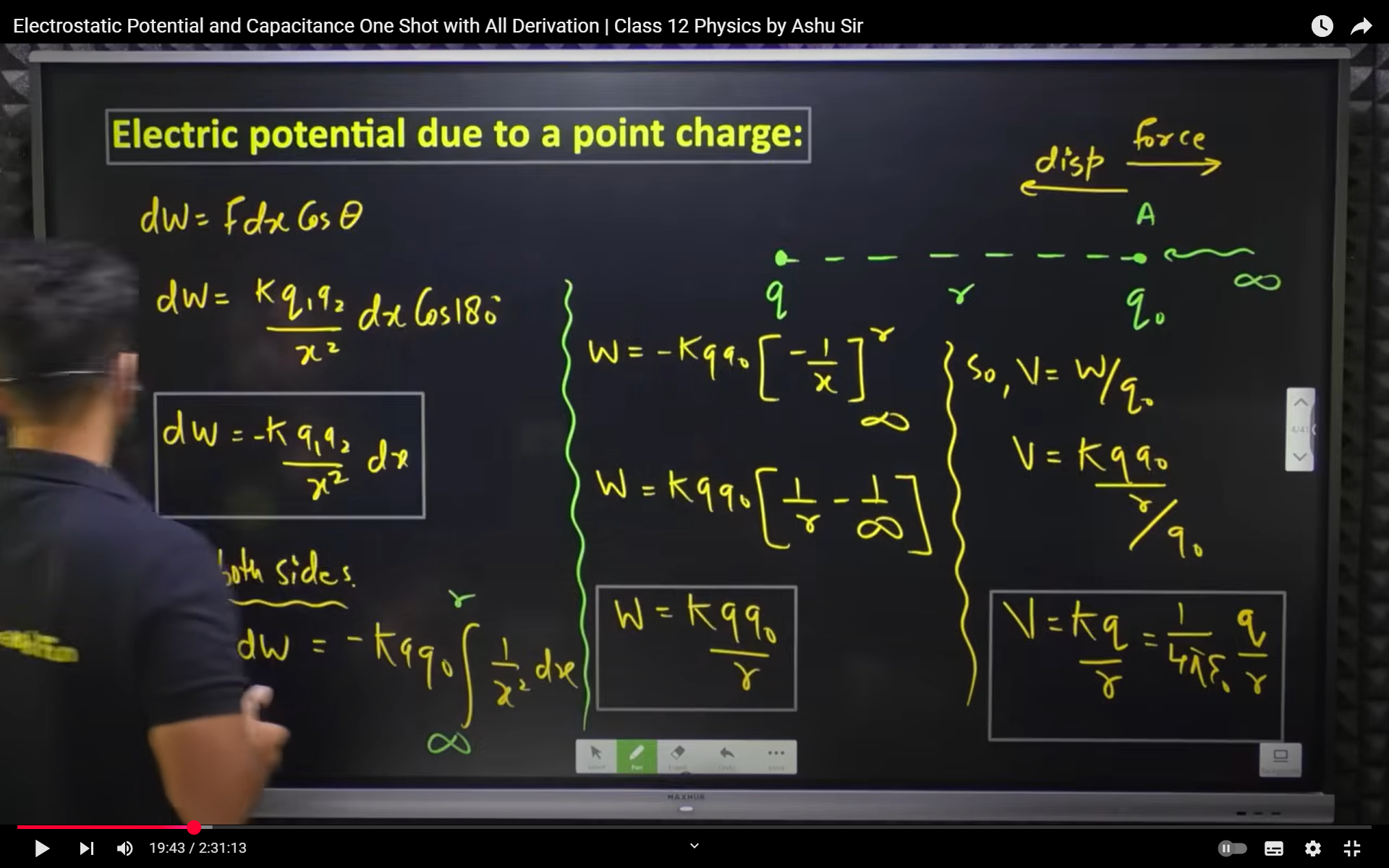
derivation: electric potential due to a dipole, AXIAL POINT
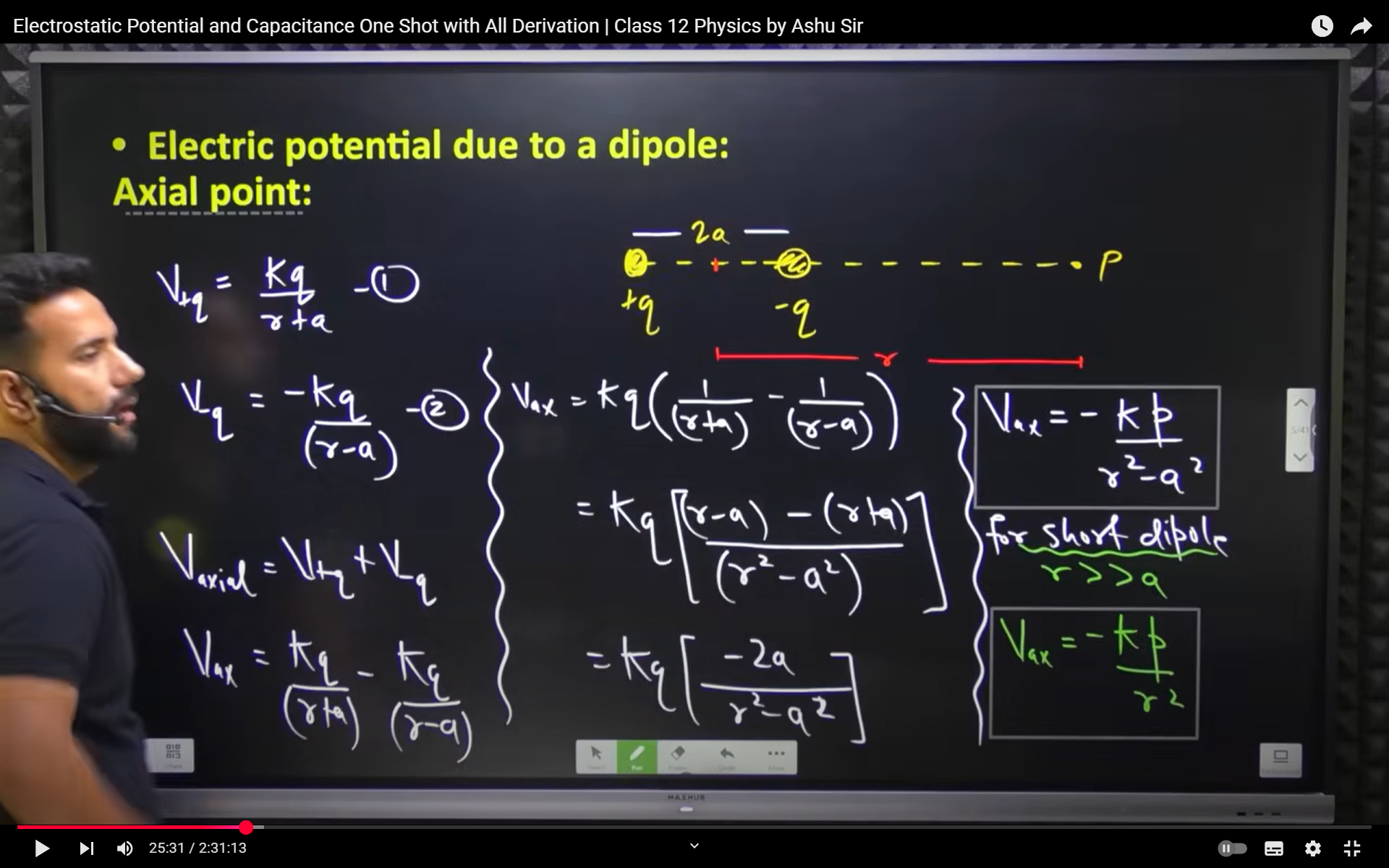
derivation: electric potential due to a dipole, EQUITORIAL POINT
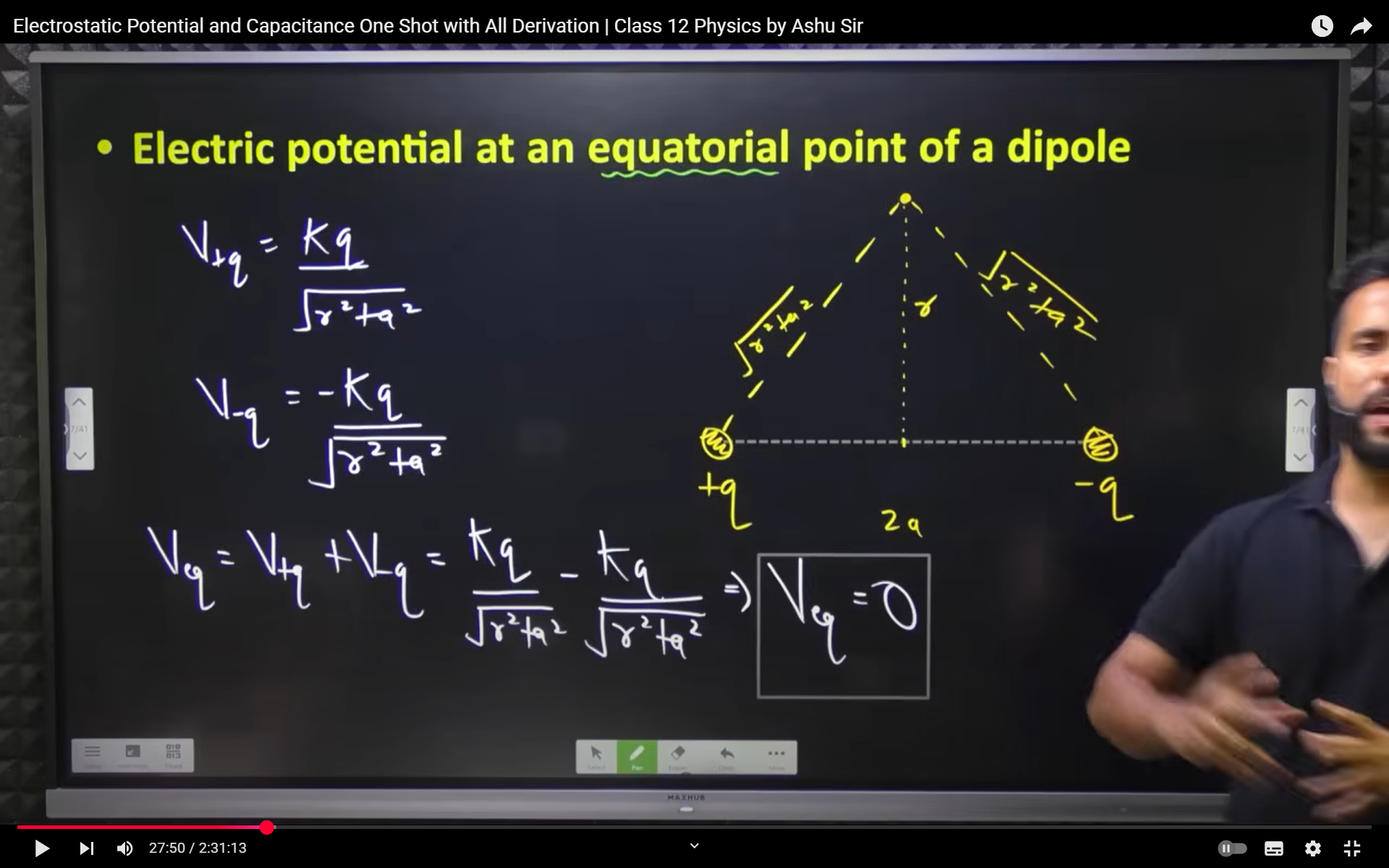
derivation: electric potential AT ANY POINT
derivation: relation between electric field and potential
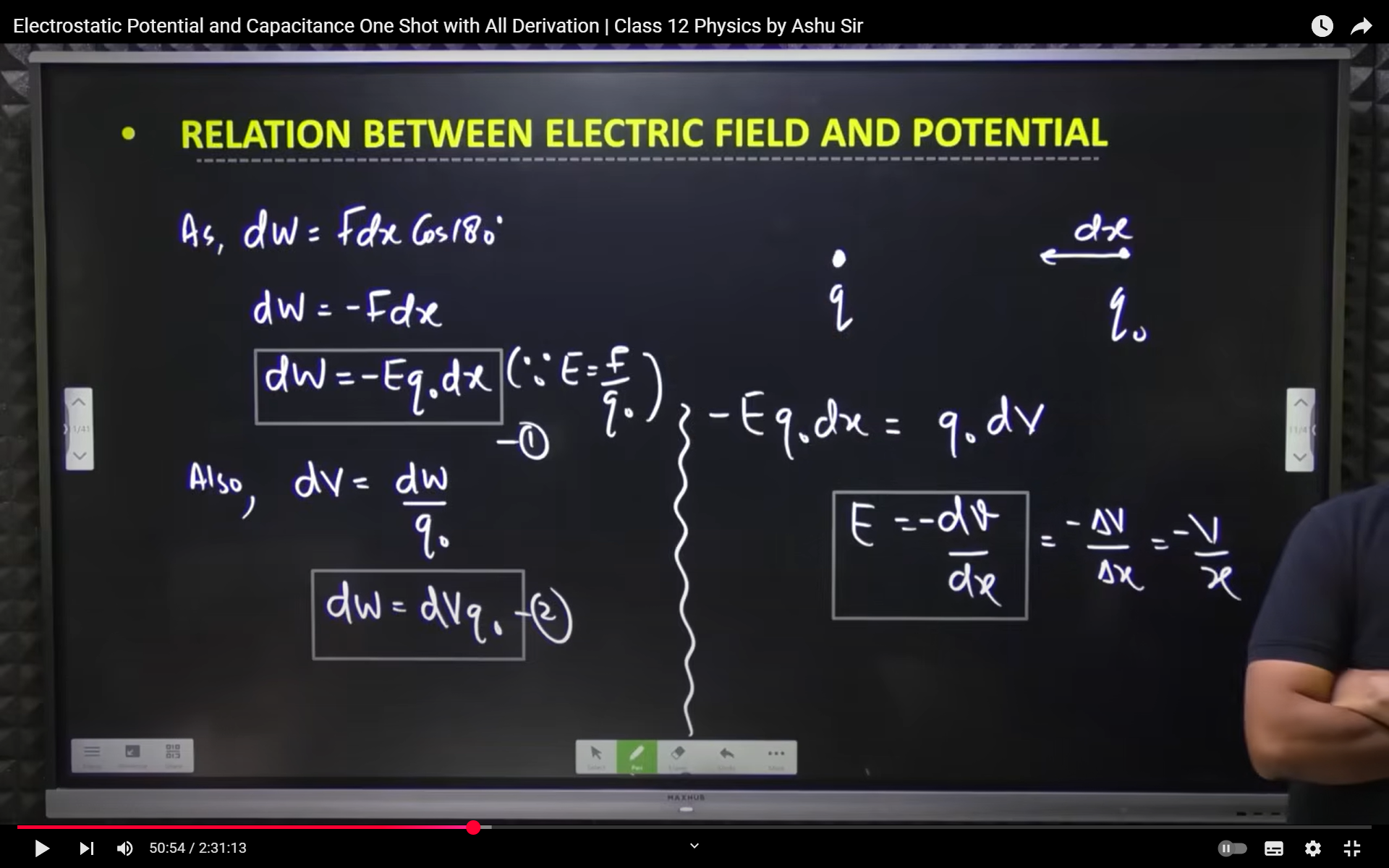
when do you call smth a gradient?
when divided by the length. electric field= potential gradient, unit=V/m
what is an equipotential surface
An equipotential surface is a surface on which the electric potential is constant. No work is required to move a charge along this surface, as the potential difference is zero.
properties of equipotential surface
electric field lines always perependicular to equipotential,
no work is done when moving along it(as W=Q*potential difference; and there is no potential differencce here
any point on the surface has the same electric potential.
euipotential surfaces are closer together in the regions of stron field and further apart where the field is weak.
no two equipotential surfaces can intersect.
why are electric field lines always normal to equipotential surfaces
It is because the electric field is defined as the negative gradient of the potential. Thus, at every point on an equipotential surface, the electric field must be perpendicular to prevent any work from being done when moving a charge.
draw the equipotential surfaces of a positive point charge
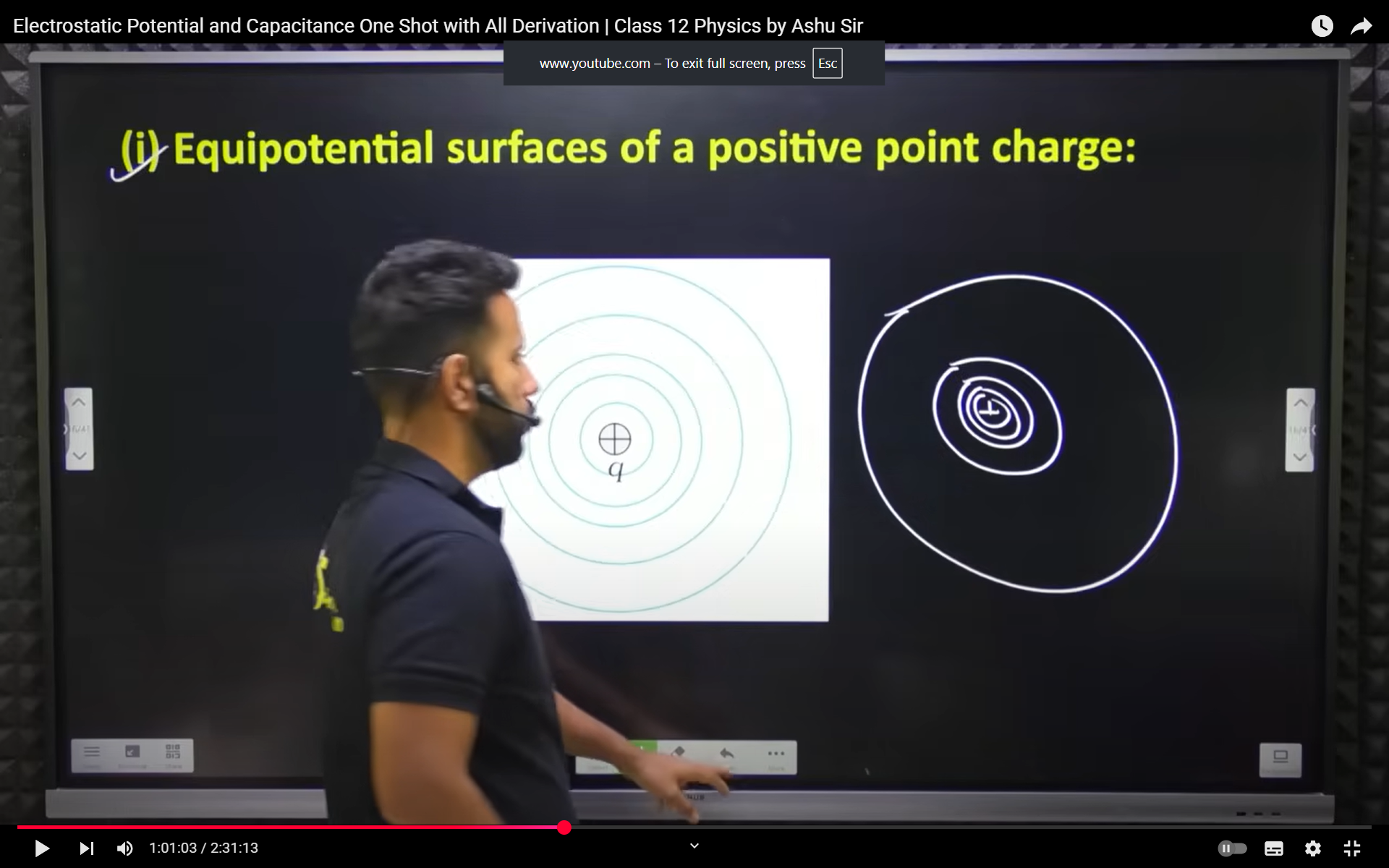
draw the equipotential surfaces of 2 equal and positive point charges
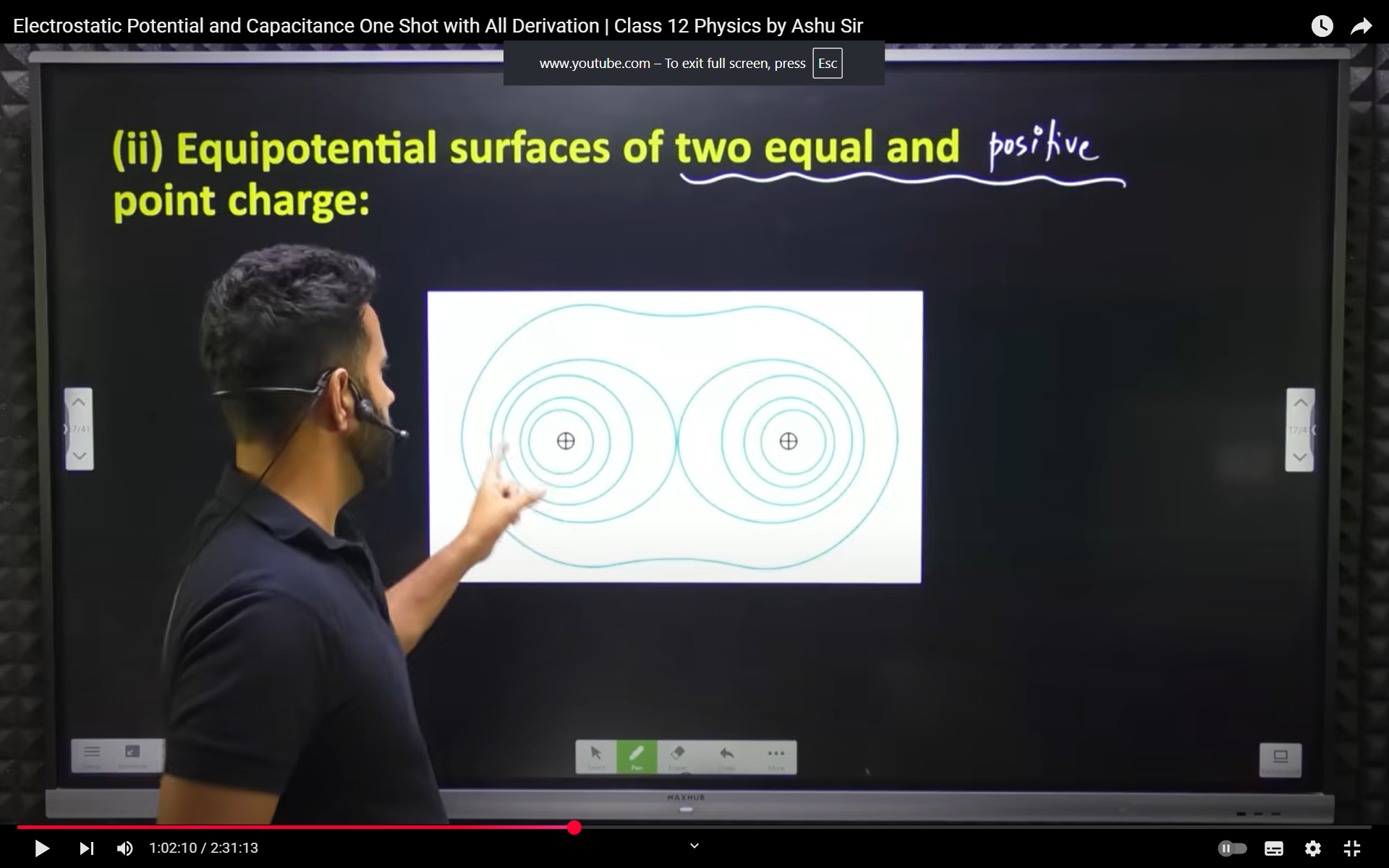
draw the equipotential surfaces of 2 equal and opposite point charges
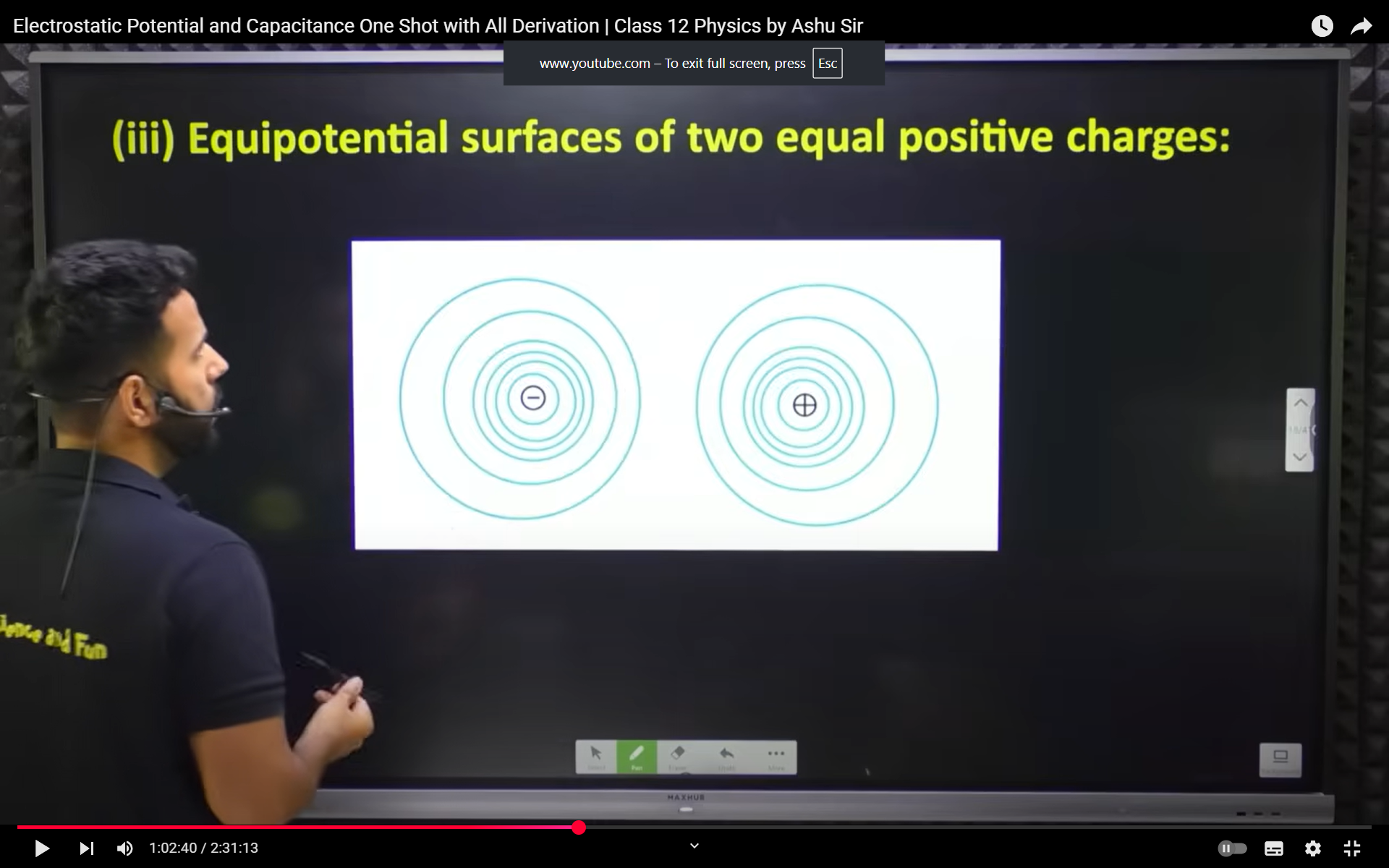
equipotential surfaces of a uniform electric field and when the electric field gradually increses towrds the right
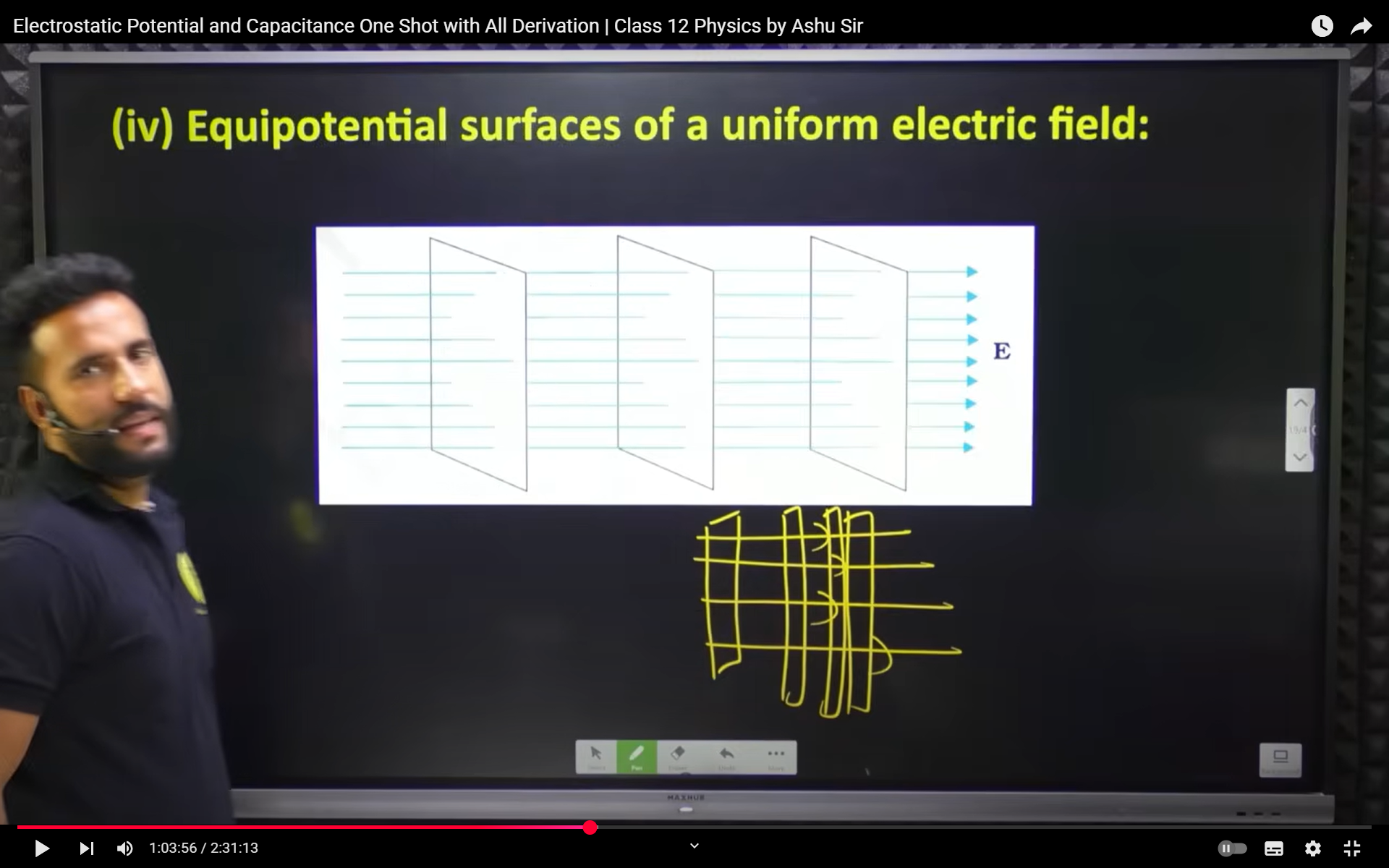
define electric potential energy
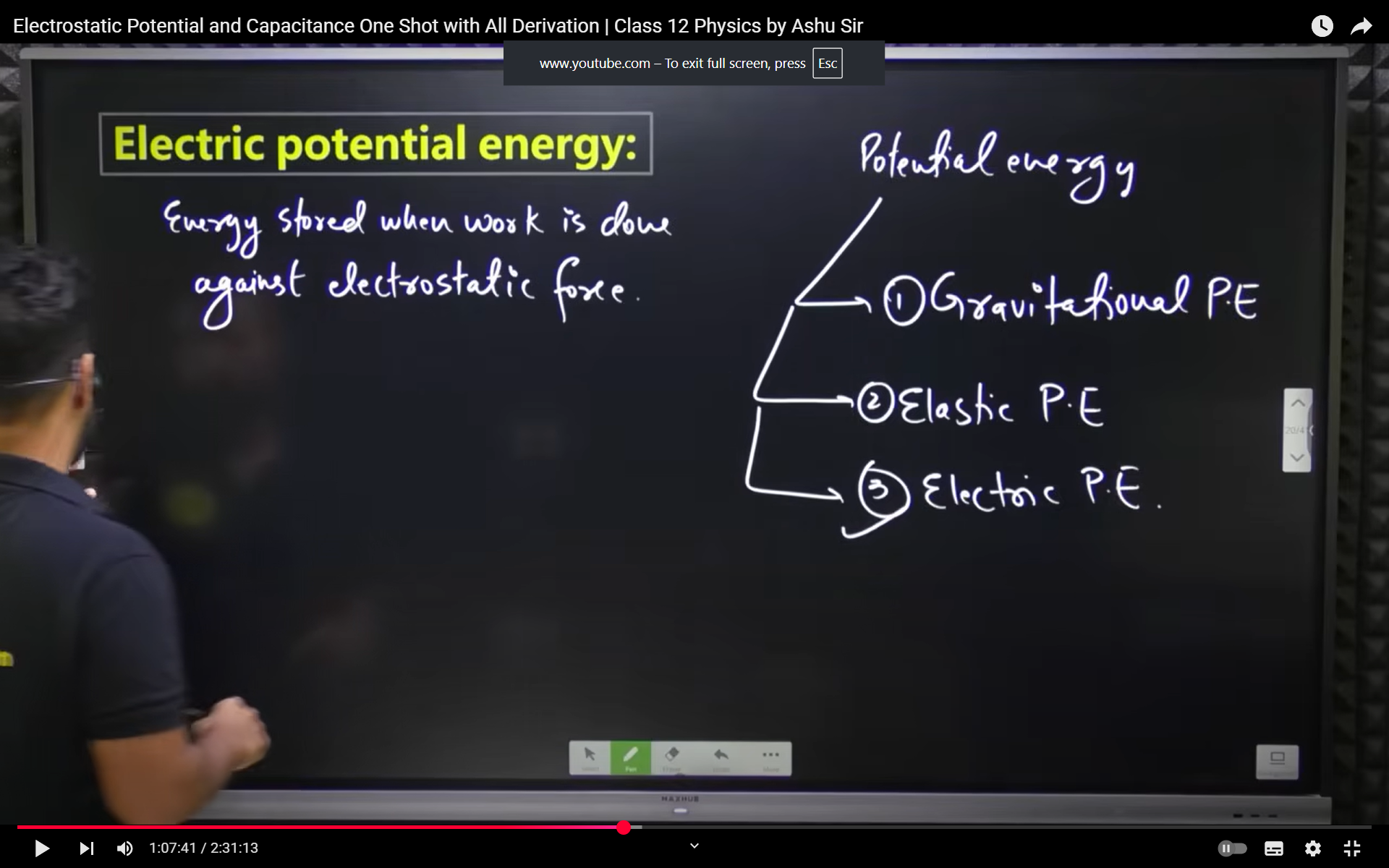
derivation: potential energy of a system of 2 point charges
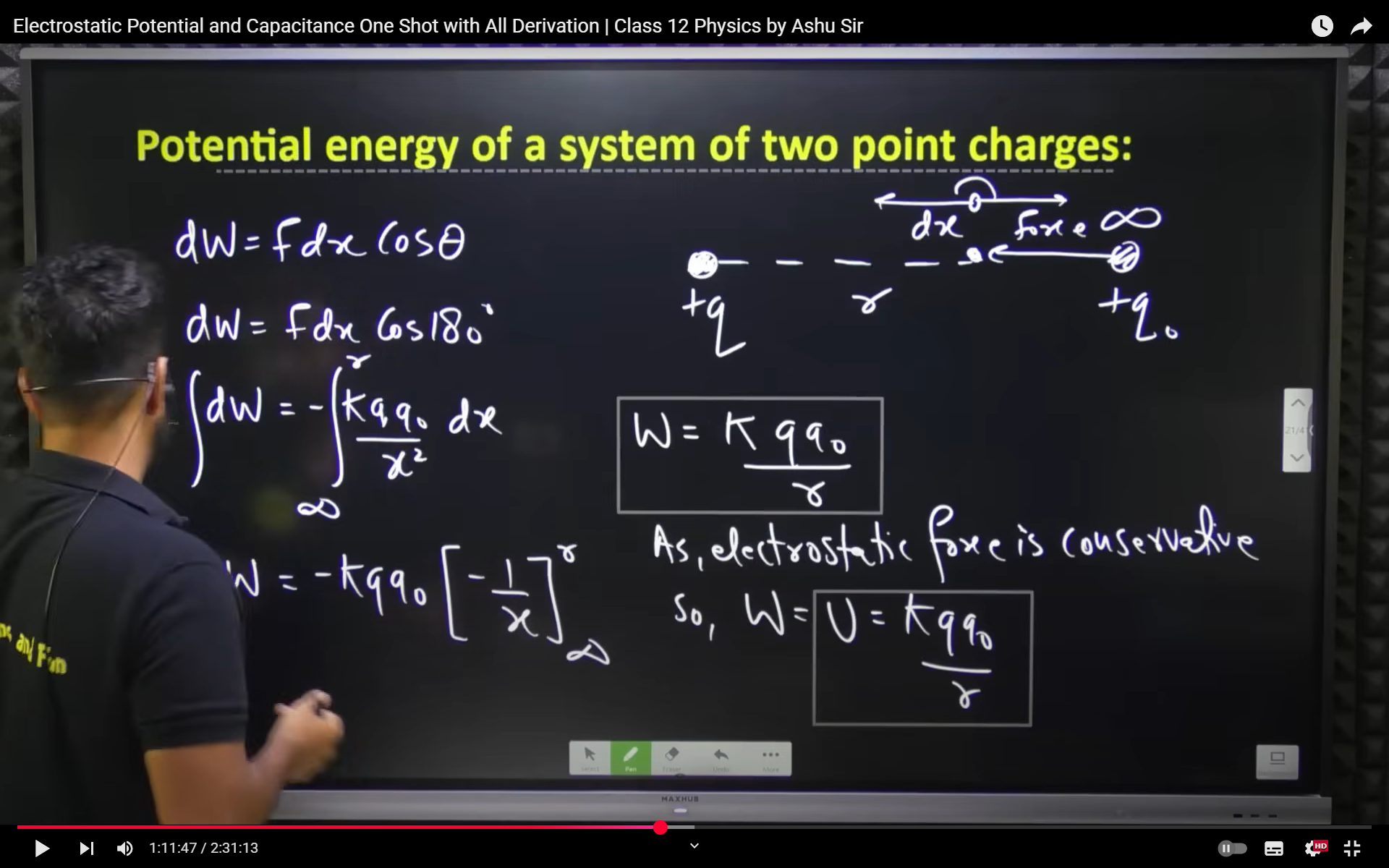
derivation: potential energy of a system of 3 point charges
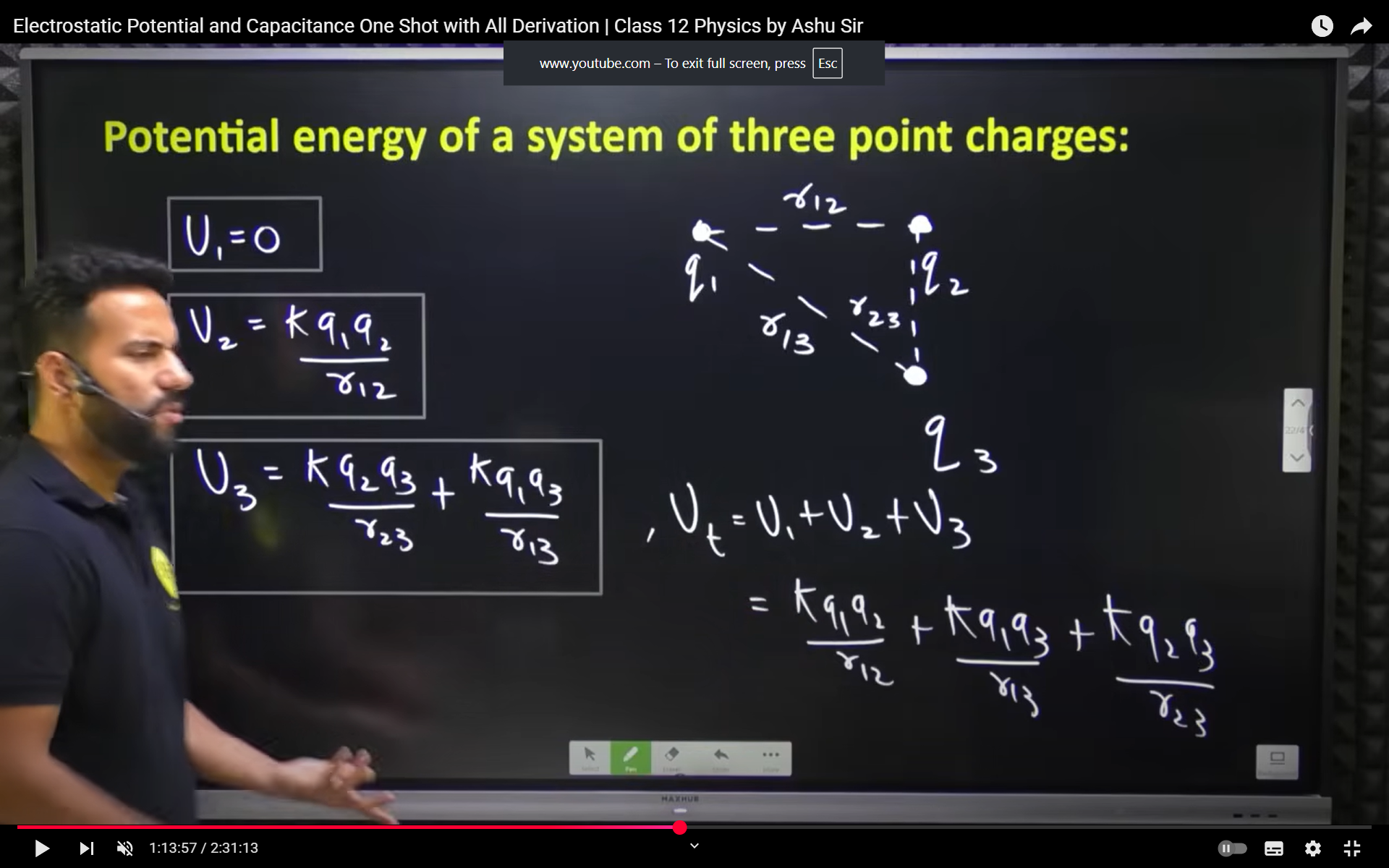
derivation: potential energy of a dipole in uniform electric field
def capacitance
the electrical capacitance of a conductor is the measure of its ability to hold electric charge.
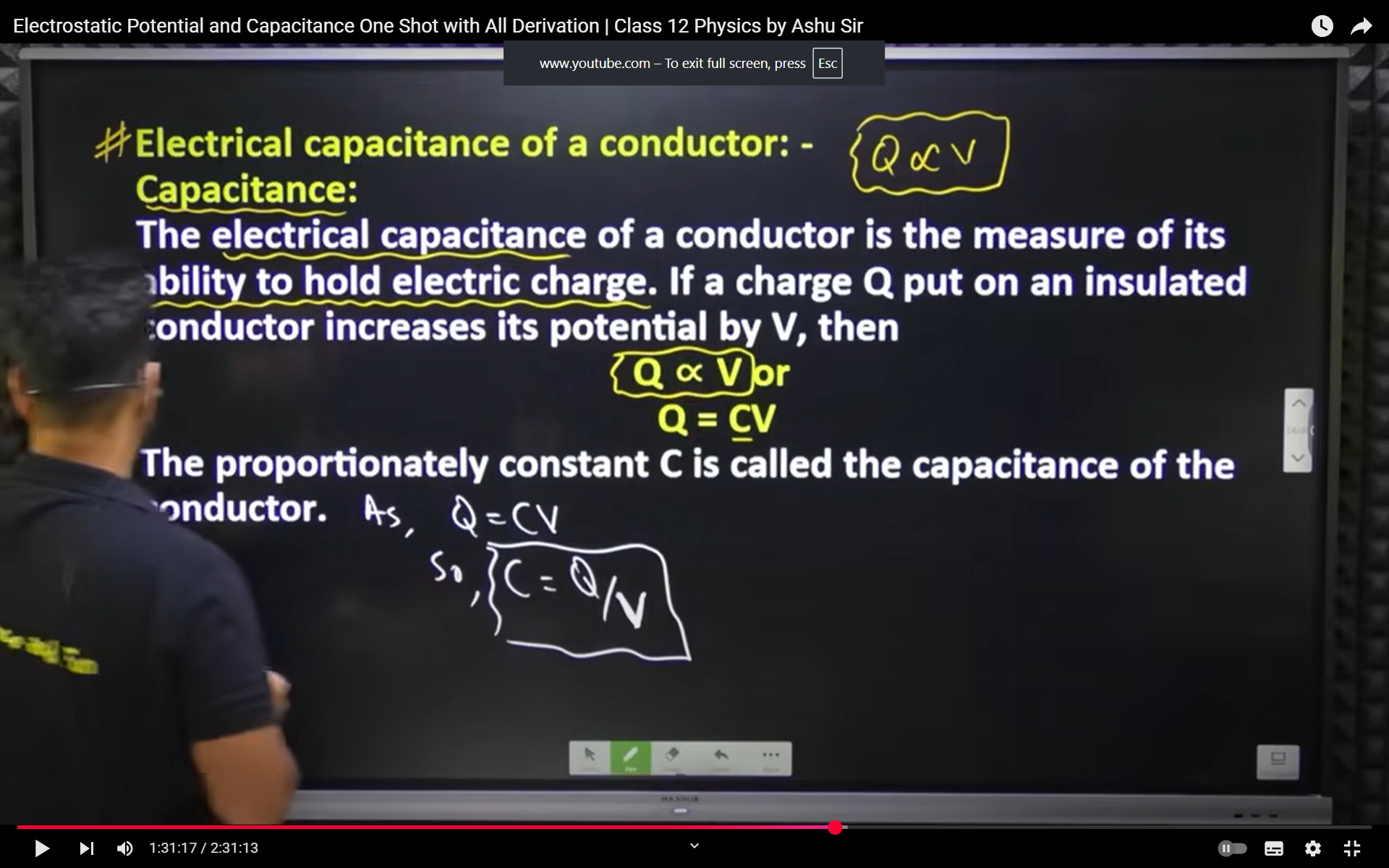
factors affecting the capacitance of a conductor
Dimentions of the capacitor
Nature of material used
Unit and dimention of capacitor

why is it impossible to have capasitance of 1 farad
let C= 1F
C= R/K
1*K= 9×10power 9m= R
derv of parallel plate capacitor
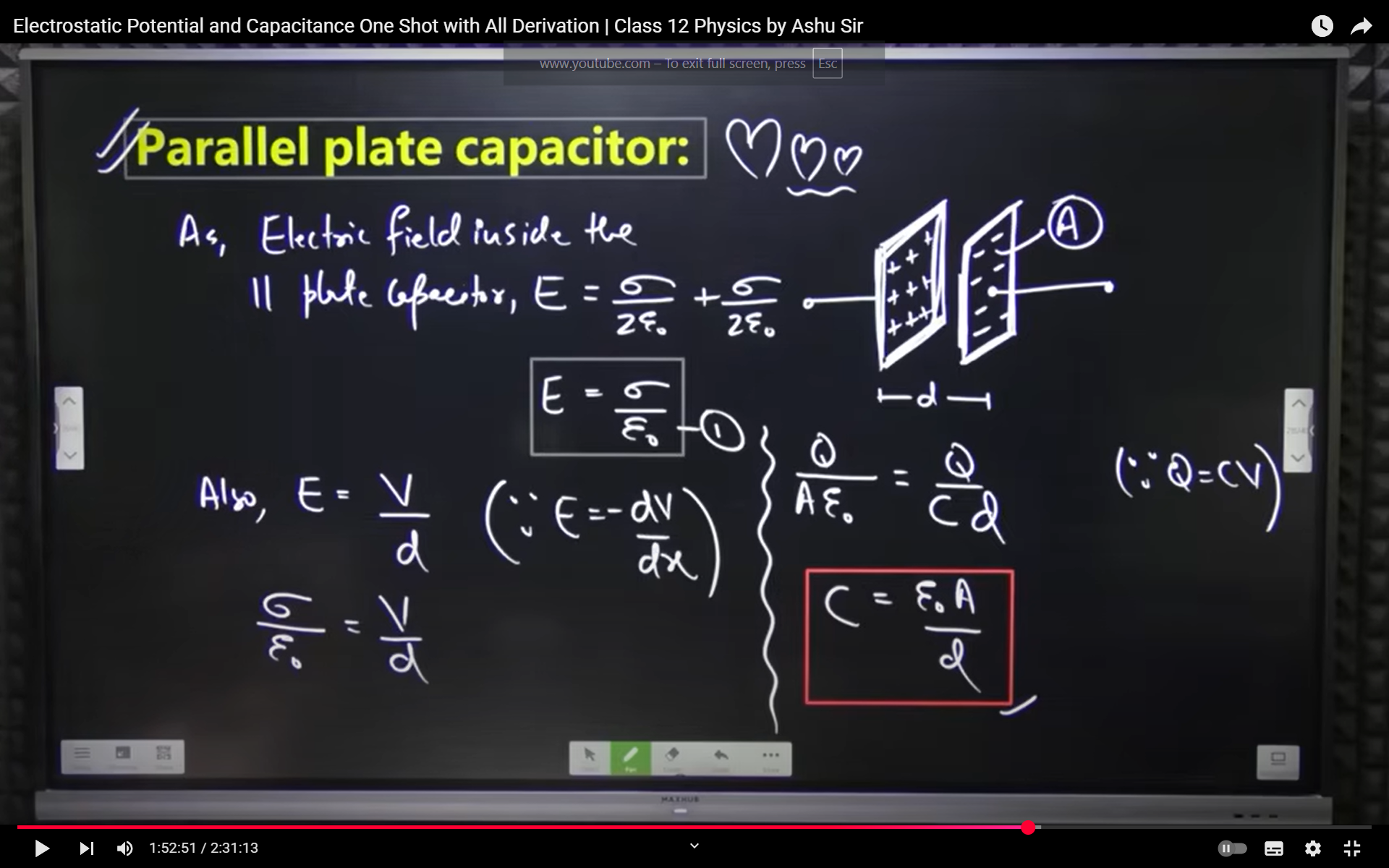
derv for combination of capacitors- series combination
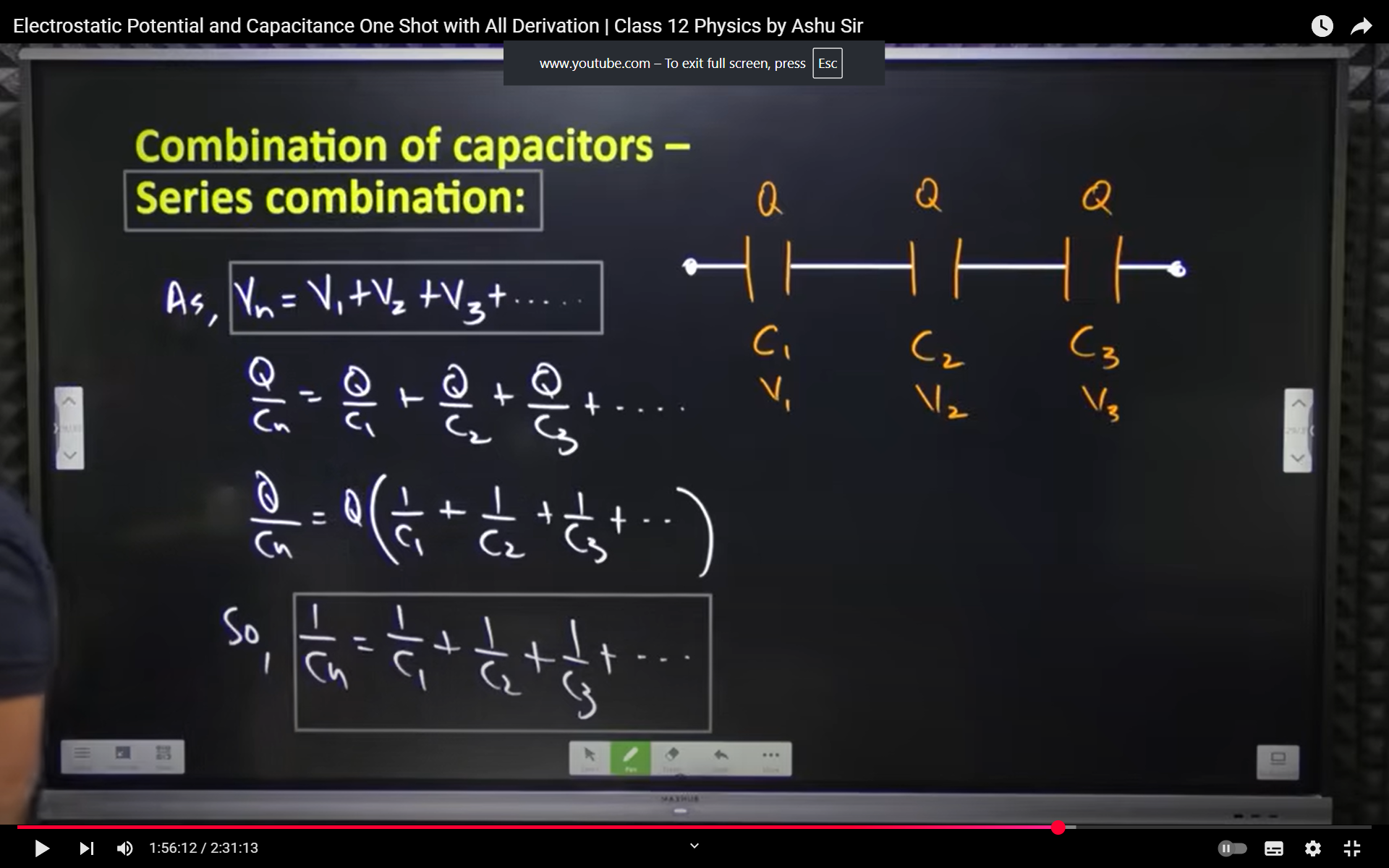
derv for combination of capacitors- parallel combination
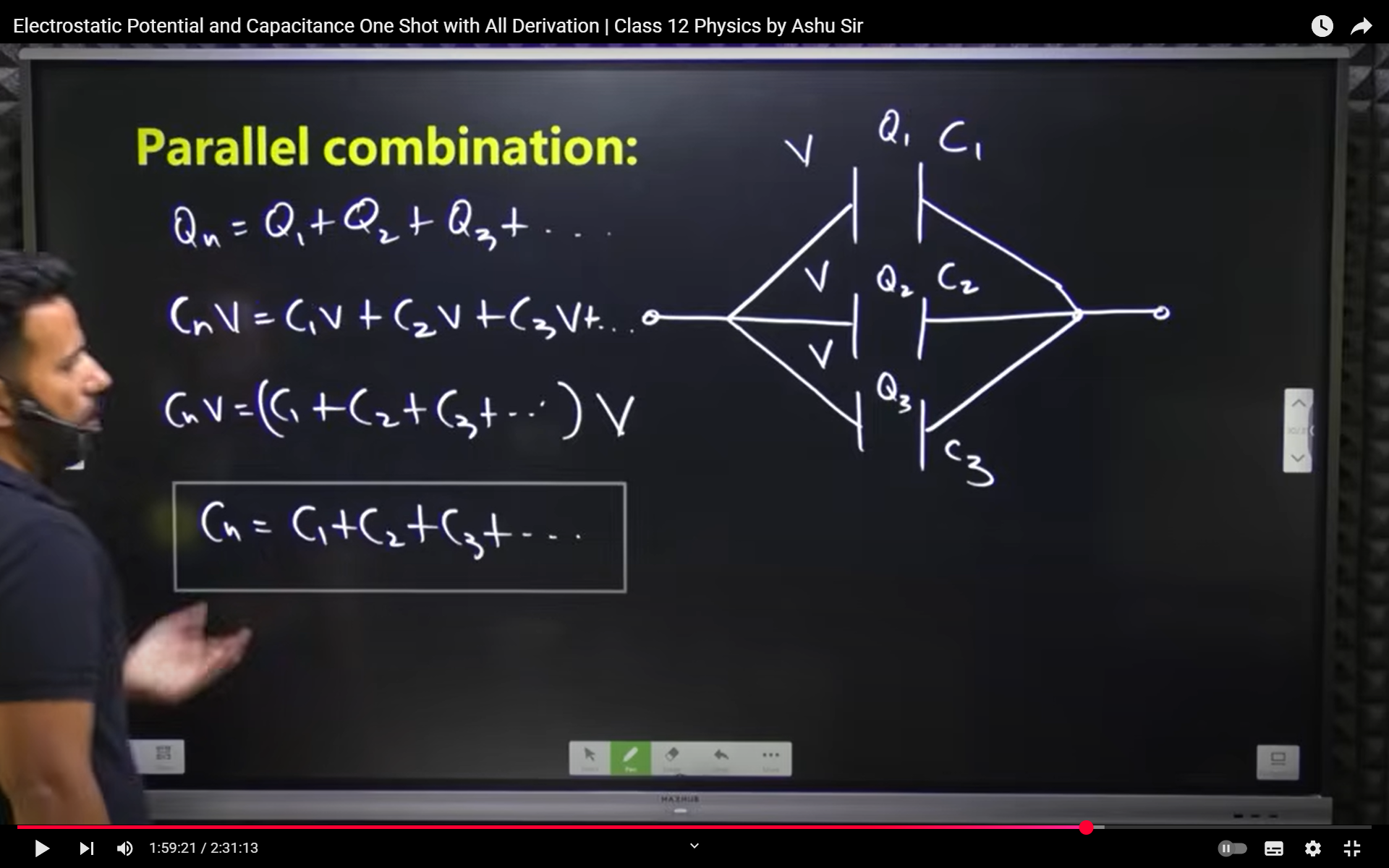
derv: energy stored in a capacitor
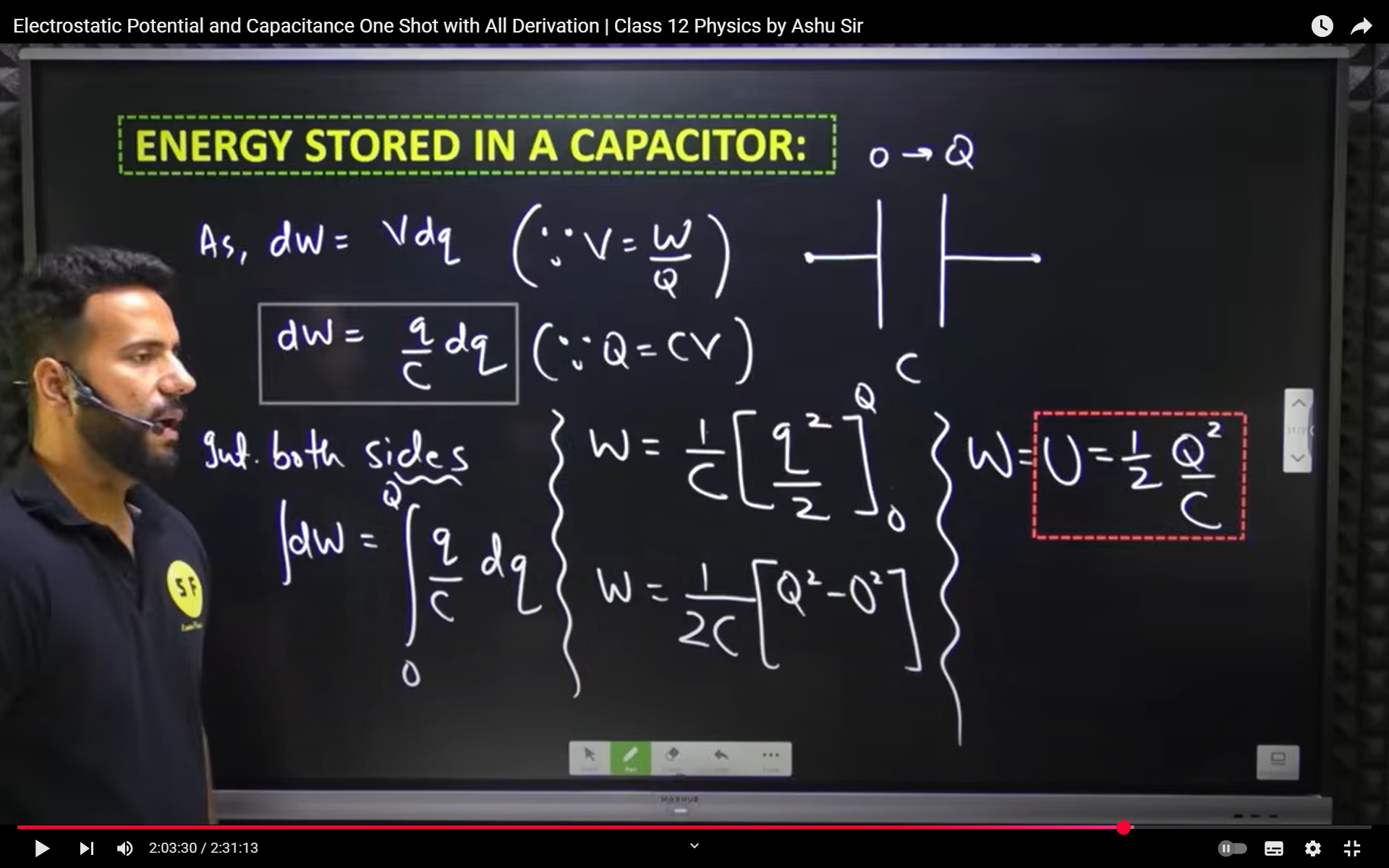
3 equations for energy stored in a capacitor

energy stored pwe unit volume in a parallel plate capacitor derivation. (IMPORTANT)
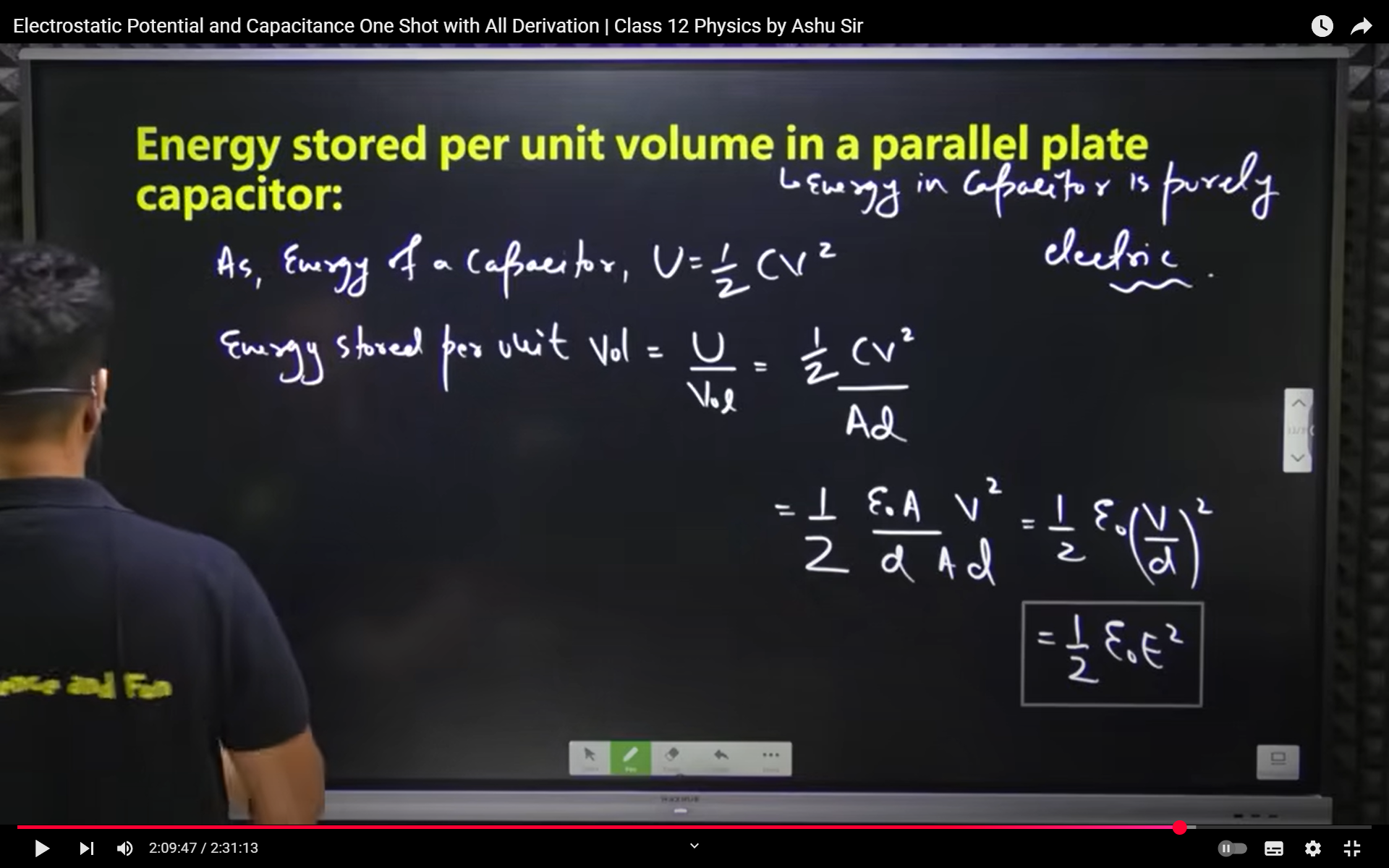
When does the capacitance of capacitor increase?
whenever we insert any dielectric inbetween the plates of the capacitor, electric field decreses which decreses the potencial difference and hence capacitance or capacitor increases
capacitance of parallel plate capacitor with a dilectric inbetween